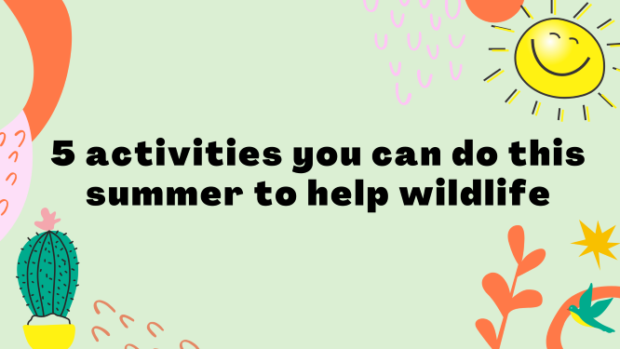1. Clean your feeders! With temperatures over 100 degrees, hummingbird feeders should be cleaned every day and bird seed feeders weekly to prevent the growth of mold and bacteria. Scrub out each part of your feeder with hot, soapy water, rinse thoroughly, and fill with fresh nectar or seed. For more thorough cleaning of seed feeders, scrub again with a 10-percent bleach solution (1-part bleach to 10-parts water). Rinse well and allow to dry completely before refilling.
2. Provide water. It is getting hot out and if you are thirsty, animals are too! Natural and human-made water features, such as ponds, bird baths, and shallow containers are great for critters in need of hydration. Make sure water sources are shallow or have a ramp, rocks, or sloping sides so young birds and mammals can drink without drowning. And, clean them regularly so they don’t get slimy!
3. Create a garden to entice pollinators. One–third of our food is pollinated by birds, bats, bees, moths and other insects. Help our important pollinators by choosing native plants that flower during different times of the year to provide nectar and pollen sources year-round. Adding native trees, bushes and flowers also provides sources for nesting, perching and camouflage.
4. Clean up your neighborhood. Carry a bag with you when you take a stroll around your neighborhood and pick up trash along the way. In addition to being unsightly, trash can harm wildlife who become tangled in it or eat something indigestible. It’s recommended to use gloves or a tool when picking up trash.
5. Make your windows safer for birds. Have fun while preventing birds from crashing into your windows with handmade decorations! Release your inner artist by using non-toxic Tempera paint or exterior tape to create patterns and images on the outside of your windows. Designs that are 4-inches apart work best! Other ideas include cutting raptor silhouettes from black paper and sticking them to the windows, or making reflective mobiles using old CD’s! If you aren’t feeling crafty, try using a window screen, leaving vertical blind slats open halfway, or planting trees and bushes outside of windows, or place along the windowsill.


